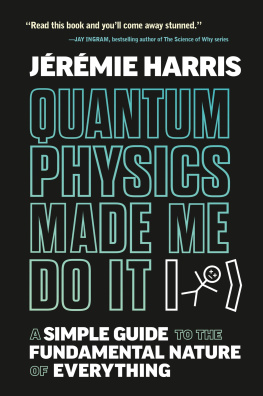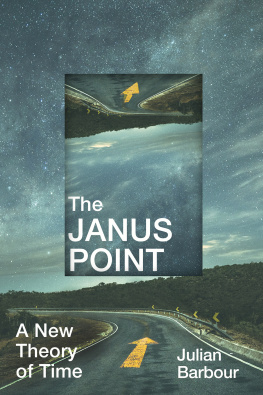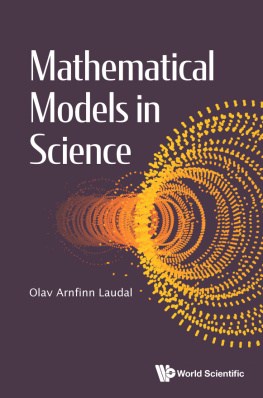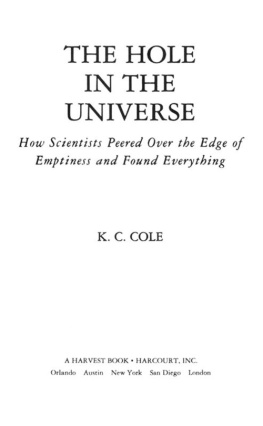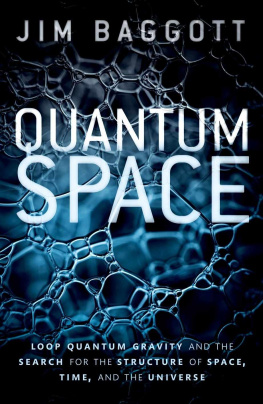
The Zero-Point Universe
By
Ray Fleming
This publication was published, written, edited and illustrated by Ray Fleming, with additional editing by Ward Lowe.
Copyright 2012 by Ray Fleming
11303 Blackmoor Dr.
Austin, TX 78759
rayrfleming@gmail.com
All rights reserved. No part of this publication may be reproduced, or transmitted, in any form or by any means, electronic, mechanical, photocopying, recording, or otherwise, without the prior written permission of Ray Fleming.
Published in the United States of America
Acknowledgement
Thanks to Dinu Popa, Robert Tisdale and Wayne Friesell for the many conversations over the past few years while I developed the theories in this book.
Introduction: The Genesis of a Physics Heretic
That one body may act upon another at a distance through a vacuum, without the mediation of any thing else, by and through which their action and force may be conveyed from one to another, is to me so great an absurdity, that I believe no man, who has in philosophical matters a competent faculty for thinking, can ever fall into it.
Sir Isaac Newton, 1693
Did you ever get the feeling that physics was just too contorted to be correct? I did. I enjoy studying the way things work and being able to predict results with simple mathematical equations. However, I found the whole idea of action at a distance unacceptable, and it was unfortunately standard to all accepted force theories. When I began to study more complex physics like General Relativity, Quantum Mechanics, Quark Theory, and String Theory, my first thoughts were, what the heck is thisstuff?
Curved space, uh, that makes no sense. Ninety percent of the matter is missing. Now if I was taking a test and I got a problem 90% wrong, I would fail. Even if I were only 70% wrong, I would still fail. Quantum Mechanics is nice, but what about the force that opposes electrostatic attraction that prevents an electron from falling into a proton. Hey guys, come back here, you forgot something. Then there is Quark Theory; you know, I read a book as a child on how measurements in the Great Pyramid correspond to dates of important events in time. It was very interesting stuff, and taught me a lesson on how to recognize numerology. Next up String Theory; but I thought physics theories were supposed to explain something, well, physical - silly me.
Perhaps the best one is that force interactions are supposedly relayed between bodies of matter by gauge bosons such as photons for the electro-magnetic forces. Now these gauge bosons are really smart particles. They have something like a memory chip in them that can store information, such as what type of charge they came from, so other bodies can tell whether they need to be attracted or repelled. It also has to record how much charge, so the other body knows how much to be attracted or repelled. Then it stores information on how fast it was going and what magnetic field was produced in the process. It does that by knowing where the universal rest frame is so comparative velocities can be computed when it hits another body. Oh, I forgot there is not supposed to be a universal rest frame to allow translations of measurements. But assuming there is one, when a smart gauge boson hits a body, the body has a small supercomputer with billions of inputs, one for each and every gauge bosons that hits it every zeptosecond. The supercomputer makes the amazingly complex calculations to determine what it has to do next. Then the body deploys a set of mini jet engines, pointing them in the proper direction, burning the right amount of fuel, so the body moves the way it is supposed to.
Of course that last paragraph is complete nonsense, as is any gauge boson theory. Gauge bosons are smart particles that supposedly transmit forces, but in reality they have no memory chip, and the bodies of matter have no supercomputer. Gauge bosons do not have any fundamental properties that would allow them to store such detailed information and certainly no way to identify a comparative frame of reference to allow them to determine relative velocities. The smart particle theory also fails to include a mechanism for how bodies are supposed to move after getting this information. The smart particle transmitting force idea (i.e. gauge boson theory) is incredible, as in not credible. Whatever it is that transmits forces through space must work in a simpler, more fundamental way.
Most of my younger life I had wanted to grow up to be a physics professor. I wanted to get my PhD and teach at a fine university and do my best to figure out all I could about the universe. I was dumbstruck over how senseless the Standard Model of physics was. So instead, I decided to fall back on plan B, to be a photographer. Well I will tell you, breaking into professional photography is really tough, and so, I went back to physics. But, when the time came to pick a graduate school, I decided I could not risk it. I felt that by exposing myself further to the theories of 1980s, I might permanently destroy my innate creative ability to come up with better theories in the future. And so, my long trek as an independent researcher began.
In my mind, the ultimate theory of the universe had to be based fundamentally on a mechanical model. Each and every force interaction must be due to a force mechanism, which allows point-to-point transmission through space. And, once transmitted, there needs to be a basic property of space that causes bodies to move, with no jet packs required. This philosophy of physics is not something new. It was the standard in the mid-1500s up to the time when Newton published his Principia . The strongest advocates of a mechanical theory of that time were two of the fathers of modern science, Galileo Galilei and Ren Descartes. In the Cartesian view, space is filled with vortices that respond to and cause movement of the planets. These vortices were responsible for gravity and other orbital interactions. Prior to Descartes, a view of an ther filled with corpuscles was more common, but the two theories coexisted.
When Newton published his Principia all that changed. He had made substantial improvements to the mathematical model that describes the movement and interaction of bodies. At the same time he failed to present a mechanical cause behind those interactions. He simply chose not to try. At one level this was smart, as he simply did not have enough information to get the theory correct. But more importantly, it set a bad precedent. It was now OK to propose models and theories that did not account for an action mechanism. Magical force transmission theories became the norm. The ideal of a working mechanical force theory was lost.
Actually, it was not lost entirely. Nicolas Fatio de Dullier a contemporary of Newtons, proposed the push theory of gravity. He based his theory on hypothetical corpuscles of the vacuum pushing bodies together. They screened each other from the pressure that would otherwise push them apart, making the force pushing them together greater. This theory is brilliantly simple, both in its methods of force transmission and interaction. Analysis showed that the theory was not correct in the form proposed by Fatio, but we will look at this theory in later chapters. A number of brilliant physicists, including Lord Kelvin, James Clerk Maxwell, Hendrik Lorentz, J.J Thompson, Henri Poincar, and Richard Feynman, chose to examine Fatios Theory, also known as Le Sages Theory since Le Sage was responsible for popularizing it. The desire to find a physical mechanism behind gravity was not entirely lost; it only felt like a lost cause because the nature of the corpuscles was misunderstood.


